Identifying habitat use and genetic structure of southern flying squirrels on the western edge of their geographic distribution
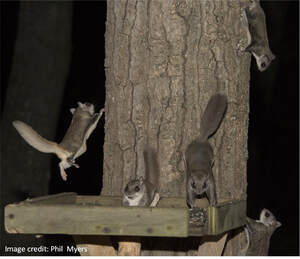
Southern flying squirrels (Glaucomys volans) are considered a species in need of conservation in Kansas, USA. They occur in forested areas in eastern Kansas - the western edge of their geographic distribution in North America. This landscape is fragmented by agriculture and urbanization resulting in a patchy network of suitable forest habitat for southern flying squirrels embedded in a matrix of novel landuse types. We are using camera traps and live-trapping efforts to identify the contemporary distribution of southern flying squirrels in Kansas and also using genetic information to characterize genetic diversity and to identify barriers to population connectivity. This work is in collaboration with Andrew Hope's lab at KSU and Kansas Department of Wildlife & Parks.
Estimating abundance and population demographics of an unmarked elk population
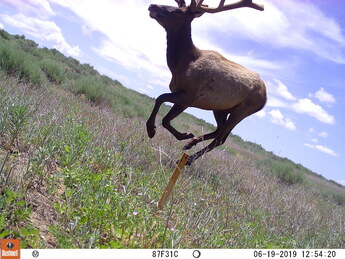
Elk (Cervus canadensis) were once widely distributed in Kansas, USA prior to colonization and settlement of European Americans. They were subsequently extirpated from much of their range through overharvest and land-use changes. In the 1980s, a small, free-range herd was re-established at Ft. Riley Military Reservation in the Flint Hills (~42,000 ha). We are using camera traps and space-to-event models to estimate changes in elk abundance on Ft. Riley so wildlife managers can effectively manage this remnant population in remaining tall-grass prairie landscapes. This work is a collaboration between Kansas State University and Environmental Division at Ft. Riley Military Reservation.
Understanding how occupancy and abundance dynamics of muskrats are influenced by wetland isolation, wetland quality, and matrix composition
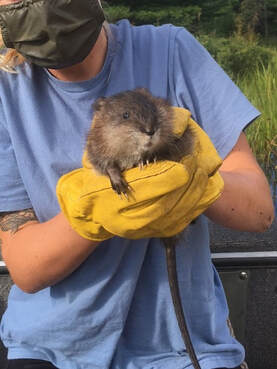
The Flint Hills ecosystem is spotted with man-made wetlands (i.e., livestock ponds) that support dynamic muskrat populations. Our goal is to understand how abundance and occupancy dynamics of muskrats in this system is influenced by wetland size, quality, and isolation. Additionally, we are interested in how upland management (prescribed fire, cattle grazing, woody vegetation encroachment) influences muskrat population dynamics in wetlands. Our work includes an experimental approach to identify how landscape management influences movement decisions of muskrats in upland areas. This work is a collaboration between Kansas State University and Kansas Department of Wildlife & Parks.
What affects the the spatial distribution and persistence of swift fox populations on the fringes of their geographic range?
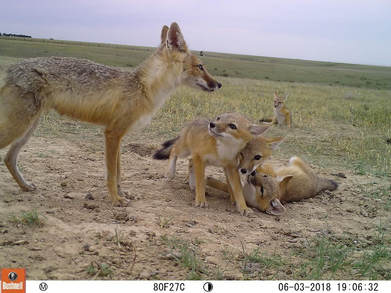
We are investigating how landscape composition (e.g., CRP, agriculture, native prairie, road density) influences the spatial distribution of swift fox populations on the eastern fringes of their geographic range. Additionally, we are assessing the relative importance of intraguild competition and climate gradients (e.g., precipitation) for structuring swift fox populations. Ty Werdel (Ph.D. student in our lab), along with two full-time technicians, will be conducting camera-trapping surveys across the western portion of Kansas to start answering these questions in 2018. This work is a collaboration between Kansas State University and Kansas Department of Wildlife & Parks.
Can muskrats serve as a native biocontrol for invasive-hybrid cattail expansions?
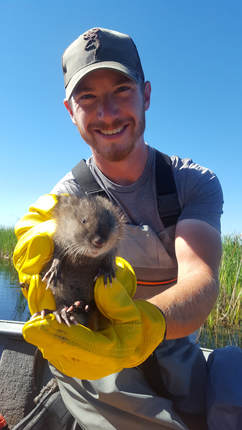
Management of wetlands that are affected by invasive-hybrid cattail (T. x glauca) encroachment generally includes prescribed burning, cutting, or dredging. All of these efforts are extremely expensive and destructive to wetland ecosystems. We are evaluating how these wetland management techniques affect native wetland biodiversity. Additionally, we are testing the effectiveness of muskrats (Ondatra zibethicus), a semiaquatic mammal that feeds on T. x glauca, as a native biocontrol for T. x glauca expansions. We are translocating muskrats into wetlands dominated by T. x glauca wetlands to enhance their population abundances. This work is a collaboration between Kansas State University, Voyageurs National Park, and the Voyageurs Wetland Restoration Project.
Quantifying the effects of invasive-hybrid cattail (T. x glauca) expansions on native wetland biodiversity
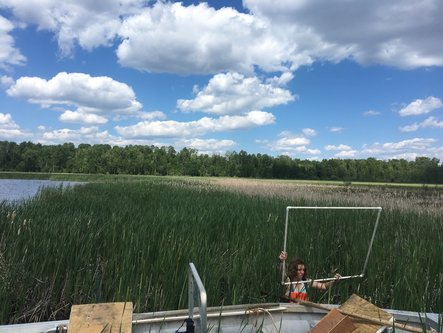
Invasive-hybrid cattails (T. x glauca) are expanding their populations across wetlands in North America. These cattails displace most native wetland vegetation and expand in denser stands than both broadleaf (Typha latifolia) and narrowleaf (Typha angustifolia) species. Although the effects of T. x glauca on native wetland vegetation and wetland structure are clear, little is known about potential effects of T. x glauca expansions on wetland-obligate wildlife. Together with Voyageurs National Park, we are assessing how semiaquatic mammals (e.g., muskrat, mink, and otter), crayfish, and birds (e.g., waterbirds, waterfowl, and shorebirds) are affected by encroaching T. x glauca in the boundary waters of northern Minnesota, USA. This work is a collaboration between Kansas State University, Voyageurs National Park, and the Voyageurs Wetland Restoration Project.
Investigating how landscape composition and intraguild competition structure carnivore communities
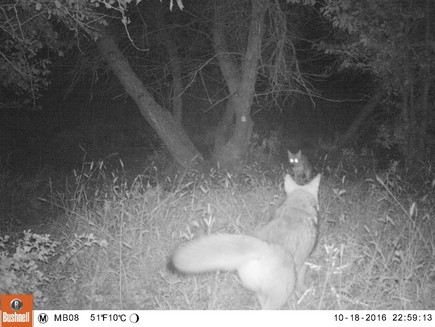
Conversion of natural landscapes to urban habitats is a persistent threat to many native wildlife species. Carnivores are particularly sensitive to this novel landscape change because of their trophic level and relatively large home-range sizes. We are investigating how carnivore communities in the Flint Hills ecoregion (one of the last remaining tall-grass habitats in North America) are affected by expanding urban land use. Additionally, we are interested in how expanding coyote (Canis latrans) populations (the apex predator in this region) affect habitat occupancy dynamics of mesopredators (e.g., red and gray fox, badger, bobcat, feral cats, striped skunks) in these rapidly changing landscapes. Our work in the Flint Hills also supports the Urban Wildlife Information Network in Lincoln Park Zoo, Chicago, Illinois.
Inferring population dynamics from wildlife harvest data
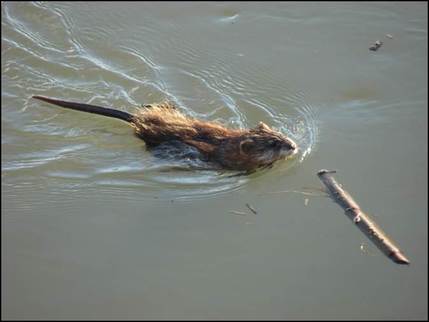
State and Federal wildlife agencies often rely on annual harvest data to make inferences about relative changes in species-specific population abundances. However, these data are often influenced by outside factors that may affect hunter or trapper participation and can potentially bias these datasets. We have been examining long-term hunter and trapper harvest data to identify factors affecting annual harvest reports and using this information to help us infer changes in population abundances of commonly harvested species. This work is a collaboration between Kansas State University and the Illinois Natural History Survey.
Determining factors that affect hunter recruitment, retention and reactivation (R3)
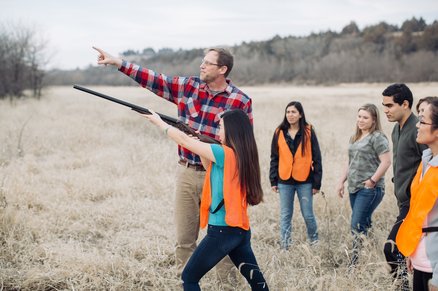
The North American Model of Wildlife Conservation is reliant on the contributions of hunters to fund and support wildlife conservation and management efforts across the continent. Through license (e.g., Federal duck stamp, state habitat stamps) and equipment (e.g., ammunition, archery supplies, firearms) purchases, hunters provide millions of dollars annually to these efforts. However, hunter recruitment, retention, and reactivation (R3) rates have been drastically declining in recent decades and these losses in hunter participation will likely have an enormous impact on future funding for wildlife conservation. Along with academic and non-academic colleagues at other institutions across the United States, we are working towards finding ways to effectively reverse these trends.